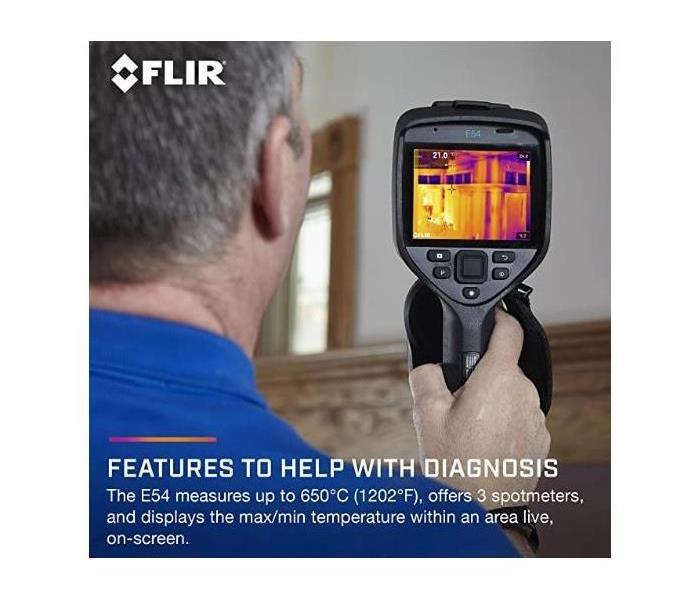Thermal Imaging Cameras
12/1/2020 (Permalink)
Thermal imaging cameras (also called infrared cameras) are utilized for inspecting and monitoring moisture in building materials. At the beginning of a water project, they provide a fast evaluation of the extent of moisture. They can show how water traveled throughout a structure, and many times they can indicate moisture that otherwise may have never been discovered. At the end of the project, they provide excellent documentation or proof that drying was successfully completed. Technically, thermal cameras do not display moisture images, but rather infrared images.
1. Thermography does not detect moisture. The infrared camera does not detect moisture, but does detect temperature differences on the surface of a material. The camera’s display shows all of the variations in temperatures across a surface as different colors in the display. In the situation where moisture in a material causes a temperature difference on the surface of the material, the infrared camera will display the wet surface areas in a distinct color from the dry surface areas.
2. Thermography does not see behind or inside materials. The infrared camera also does not display anything that is inside a wall, in the middle of a material, or beneath a surface. The camera shows infrared images, and infrared images are not X-ray images. The camera only shows what is happening with heat on a surface. Of course, what happens on a surface may suggest what is happening inside or underneath. Some of the temperature differences on the surface may possibly result from moisture behind, under, or inside a material.
Let SERVPRO of Pewaukee and Sussex find hidden water with the FLIR E54 Advanced Thermal Imaging Camera!
If you have a water damage at your property, call SERVPRO of Pewaukee & Sussex at 262.696.6336.





 24/7 Emergency Service
24/7 Emergency Service
